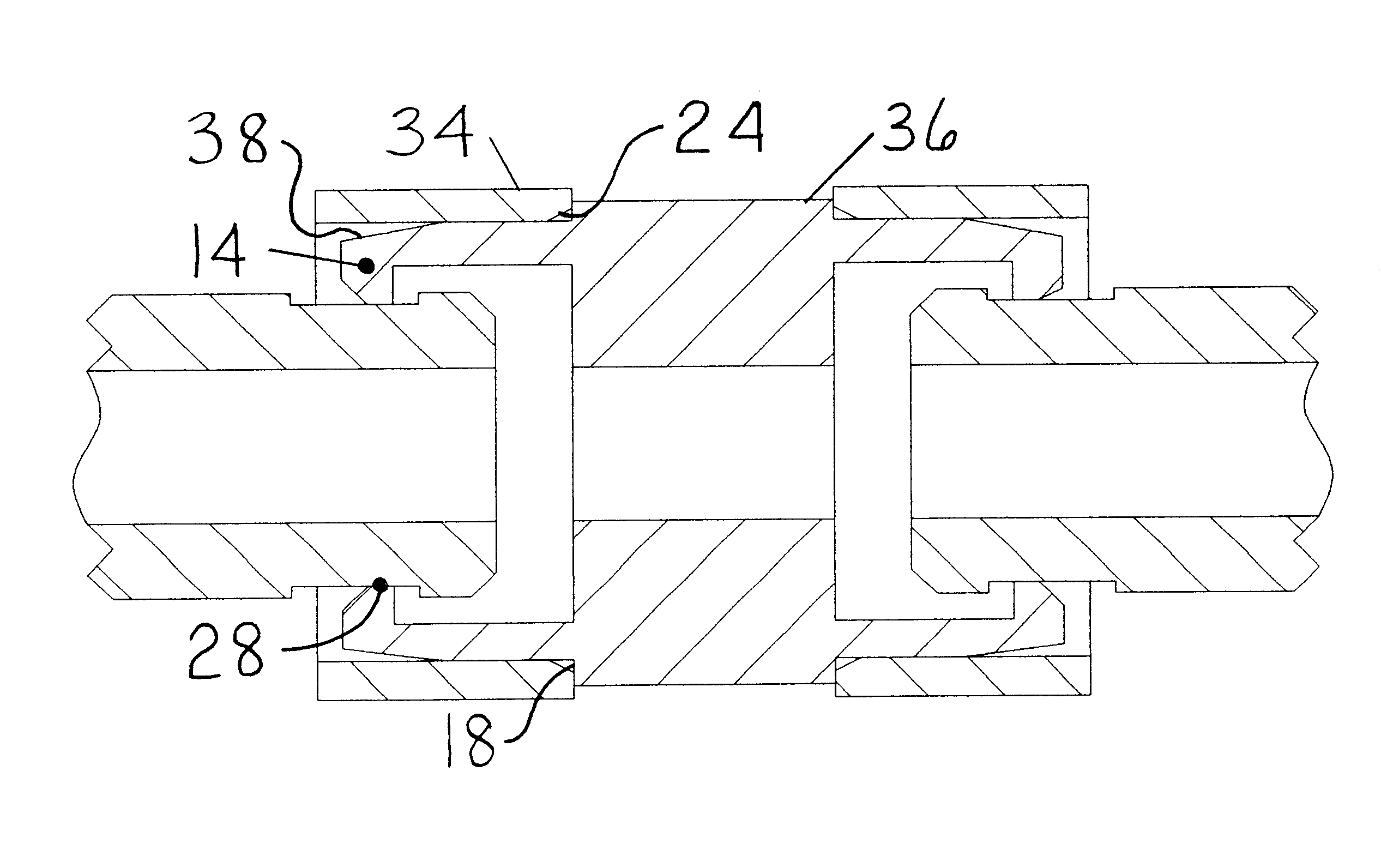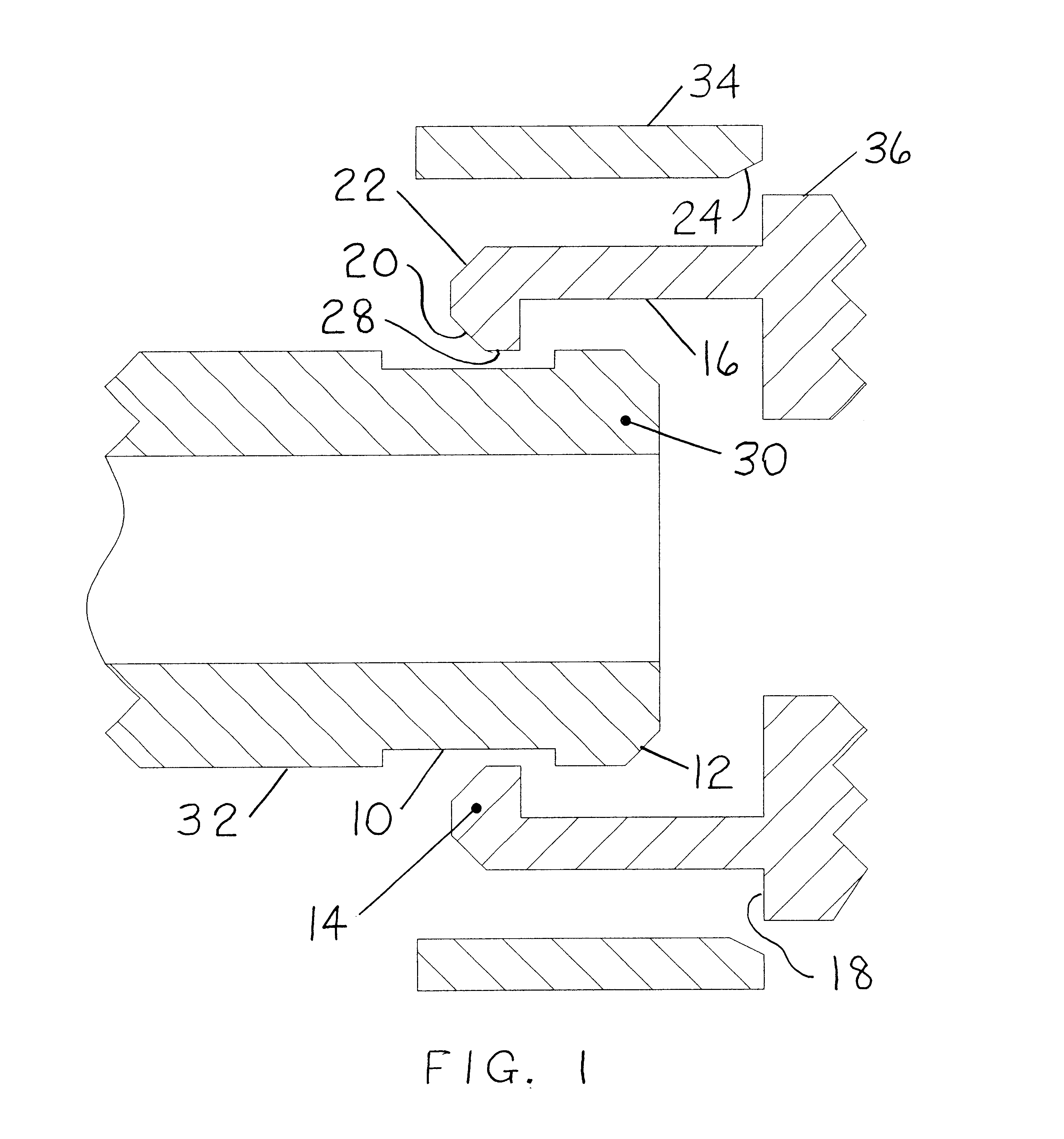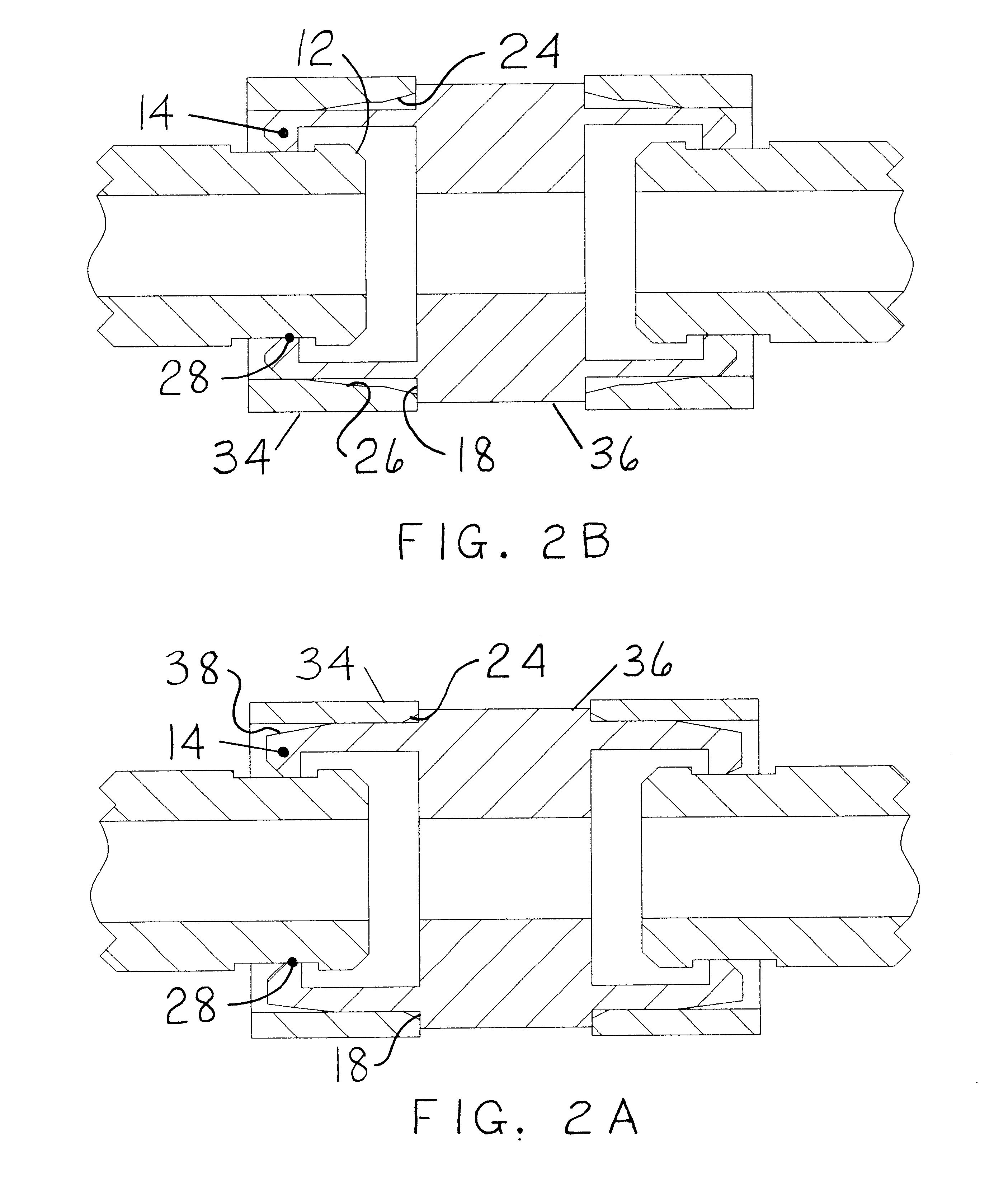Plastic pipe coupling system
a coupling system and plastic pipe technology, applied in the direction of hose connections, couplings, branching pipes, etc., can solve the problems of requiring destructive techniques, unable to allow rotational or axial misalignment, and unable to adjust the relative motion of parts, etc., to achieve the effect of simple disassembly and easy manual operation
- Summary
- Abstract
- Description
- Claims
- Application Information
AI Technical Summary
Benefits of technology
Problems solved by technology
Method used
Image
Examples
Embodiment Construction
A typical embodiment of the pipe coupling system of the present invention is illustrated in FIG. 1 (exploded view). The invention comprises a pipe or tube 32, a support ring 34, and a joint or coupling 36. FIGS. 2A and 2B show the final assembly for two different configurations of the present invention. FIGS. 3A, 3B, 3C illustrate some of the many configurations in which the coupling of the present invention can be employed.
Pipe 32 is typically made from schedule 40 polyvinyl chloride pipe of the type commonly used for irrigation. Other options exist including but not limited to fabricating the pipe from polyvinyl chloride conduit or thicker walled schedule 80 polyvinyl chloride pipe. The pipe is preferably made from polyvinyl chloride but other plastic materials having similar characteristics of strength and flexibility may be employed. The pipe may range in diameter from about one half inch to over three inches and have a substantial wall thickness to withstand internal pressure o...
PUM
| Property | Measurement | Unit |
|---|---|---|
| working time | aaaaa | aaaaa |
| diameter | aaaaa | aaaaa |
| diameter | aaaaa | aaaaa |
Abstract
Description
Claims
Application Information
 Login to View More
Login to View More - R&D
- Intellectual Property
- Life Sciences
- Materials
- Tech Scout
- Unparalleled Data Quality
- Higher Quality Content
- 60% Fewer Hallucinations
Browse by: Latest US Patents, China's latest patents, Technical Efficacy Thesaurus, Application Domain, Technology Topic, Popular Technical Reports.
© 2025 PatSnap. All rights reserved.Legal|Privacy policy|Modern Slavery Act Transparency Statement|Sitemap|About US| Contact US: help@patsnap.com



